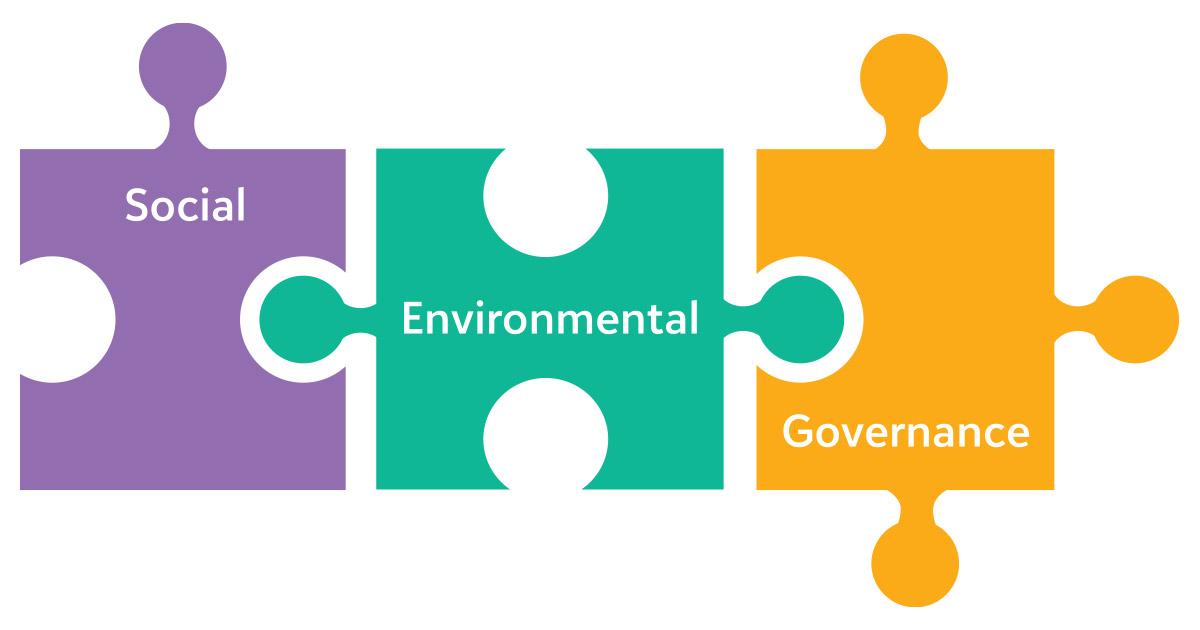Picking Apart the Pieces of ESG
We’ve explored a brief history of Environmental Social Governance and shared reasons to invest in ESG, so now let’s take a look at all of the various components that makeup ESG. As you can imagine, there are hundreds of ways to examine and measure a company’s ESG efforts. The best way to picture ESG on a company level, especially if you’re building programs for the first time, is to imagine the concept like a build your own puzzle.
Just like corporate social responsibility programs, no company can do it all, nor should they. Companies have unique strengths and weaknesses based on their industry, customer base, geographic location, employee base etc. No two programs will look exactly the same-companies should pick and choose the pieces to their own ESG puzzle that best address their strengths and weaknesses.
For example, if you’re a software company, some strengths of your employee base could be volunteering around coding camps for young girls and focusing on the accessibility of your platform.
If you’re a plastics manufacturer, offsetting your carbon footprint and focusing on sustainability through volunteering and charitable partnerships that clean-ups oceans and beaches would fit well within the strengths of your company.
On the flip side, it might not be the best use of resources for the plastic manufacturing workers to focus on volunteering to teach young girls to code, and the software company might not be best suited to focus charitable giving exclusively on beach & ocean clean ups (although any company located by a coast would be well positioned to take care of their coastal communities!) The point is, there is nuance in every situation and it’s going to be up to you and your organization to decide what components of ESG are most appropriate for your company.
So What Does ESG Mean?
ESG stands for environmental social governance and incorporates:
-
E – how companies consider the environmental impacts of the products and services they produce
-
S – how a company takes care of their stakeholders and
-
G – the system by which a company operates.
What goes into each letter of ESG?
While the following is by no means a comprehensive list, it is a good place to start as you develop your ESG initiatives. ESG programs are going to look different for every company and might even look different within your own company based on your geographic footprint. Global companies should take special consideration in adopting their ESG approach to meet the unique needs of their employees and communities across different locations and shouldn’t assume any one program will be universally appropriate.

-
-
Diversity and Inclusion programs
-
Benefits packages for employees. For parental benefits, how do you provide for same-sex couples or individuals and how do you provide for employees
pursuing adoption?
-
Equity across all gender identities, race, and age. CSR programs- both employee engagement and more corporate-driven giving programs
-
Customer Satisfaction
-
Product responsibility & safety
-
Accessibility of products and services
-
Human Rights – pay and working conditions
-
Learning and Development
-
-
-
Supply Chain of products and materials
-
Waste management
-
Water usage
-
Pollution
-
Energy consumption for your buildings
-
Sustainable Packaging
-
Carbon emissions (Have you considered factoring in employee commute time or company travel into the total emissions you offset?)
-
Incorporating renewable energy
-
Electronic recycling programs
-
Public transportation incentives
-
-
-
Board Diversity across age, gender, and race
-
Executive Leadership Diversity
-
Transparent accounting
-
Executive & Board compensation
-
Lobbying activities
-
Political donations
-
Compliance with local and federal regulations
-
Risk Management
-
Cybersecurity
-
Consumer privacy
-
Shareholder engagement
-
If you’ve been following Corporate Social Responsibility, you can see that there is an intersectional relationship between corporate culture, social impact and corporate governance. Achieving social responsibility depends on how companies are directed. This article “Merging Corporate Social Responsibility with Your Company’s Strategy” discusses how to take action to align CSR efforts with your overall company strategy.